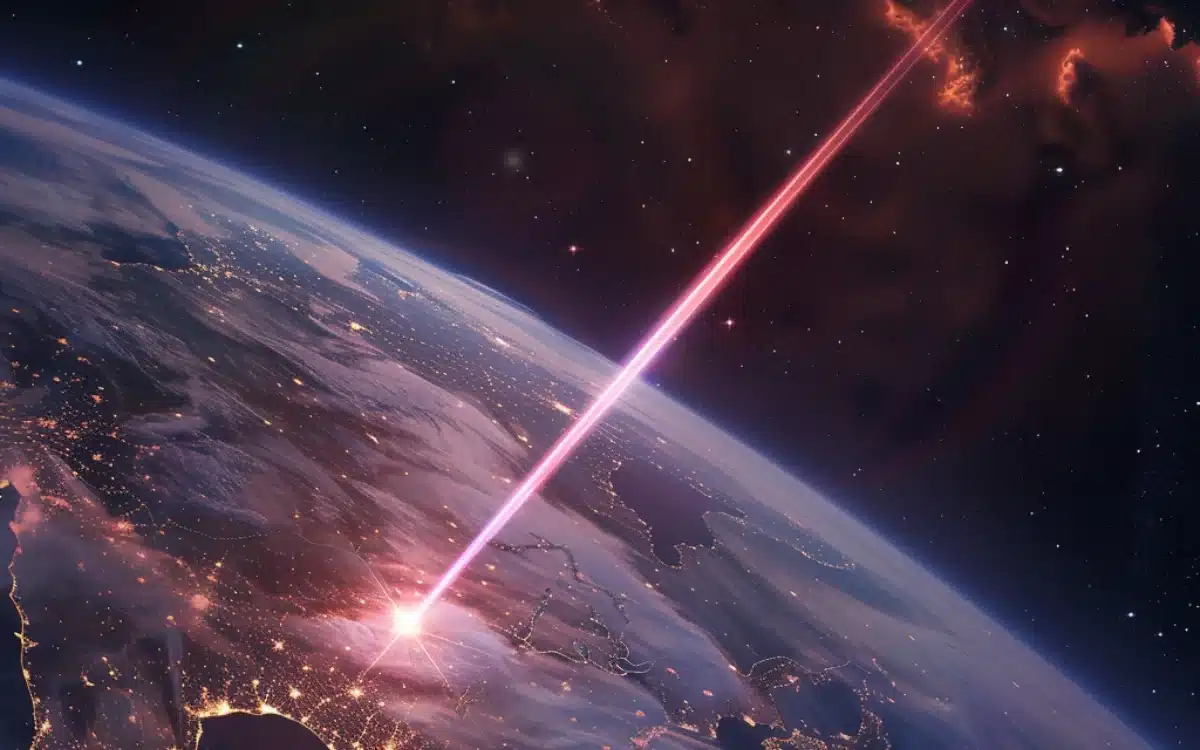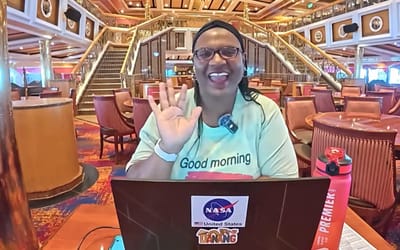NASA receives laser signal sent from mind-blowing 226 million kilometers away
- NASA just received a message beamed from 226 million kilometers away
- It was beamed by infrared laser
- Radio waves were previously relied on
Published on Apr 29, 2024 at 8:00 PM (UTC+4)
by Amelia Jean Hershman-Jones
Last updated on Apr 30, 2024 at 5:57 PM (UTC+4)
Edited by
Tom Wood
If you think 5G is good, NASA just received a laser signal message beamed from 226 million kilometers away.
Forming part of the NASA Psyche mission that aims to study a peculiar metallic asteroid, the agency decided to give a new communication system a whirl.
And it’s exceeding all of their expectations.
READ MORE! NASA’s Voyager 1 is finally sending messages that make sense after months of gibberish
The new approach uses an infrared laser over the radio waves that were previously relied upon.
And the laser signal has proven to deliver information from the most distant place in history.
Putting ‘the long-distance’ in long-distance call, Psyche was 226 million kilometers (140 million miles) from Earth when the message was sent.
To put that into context: that’s 150% of the distance between the Earth and the Sun.
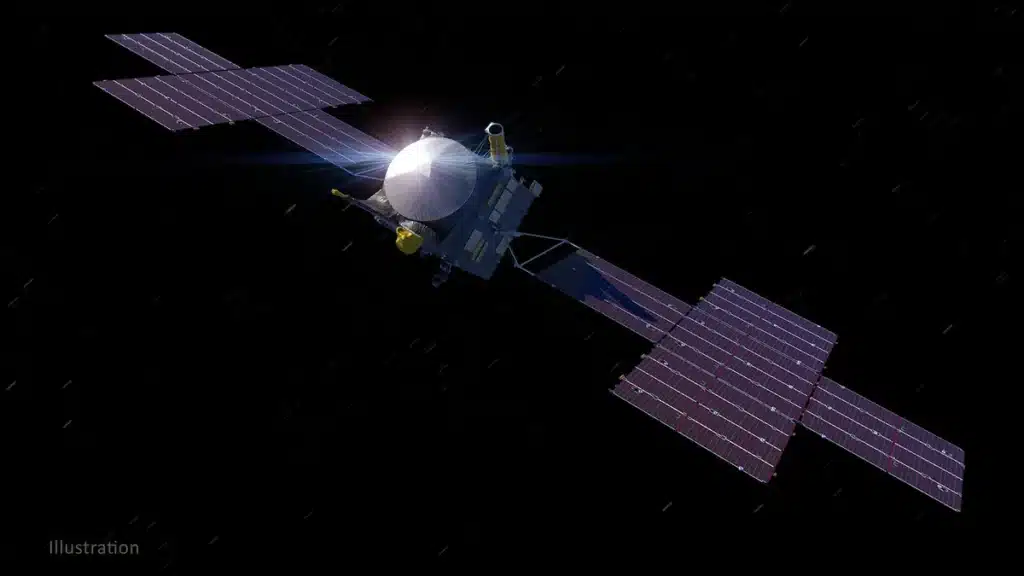
Previously, as was the norm, Psyche was transmitting engineering test data via radio waves through the NASA Deep Space Network from much closer.
However, the NASA mission team then made the unprecedented decision to use an alternative route: a laser signal.
The decision was made to transmit spacecraft data on 8 April over the Deep Space Optical Communication system.
While spacecraft were previously ‘just’ tens of millions of kilometers away, even from this new and almost incomprehensible distance, the data was downloadable with a maximum rate of 25 Mbps.
This laser signal method is 10 to 100 times faster than radio transmissions and massively exceeds the goal of ‘at least 1 Mbps’.
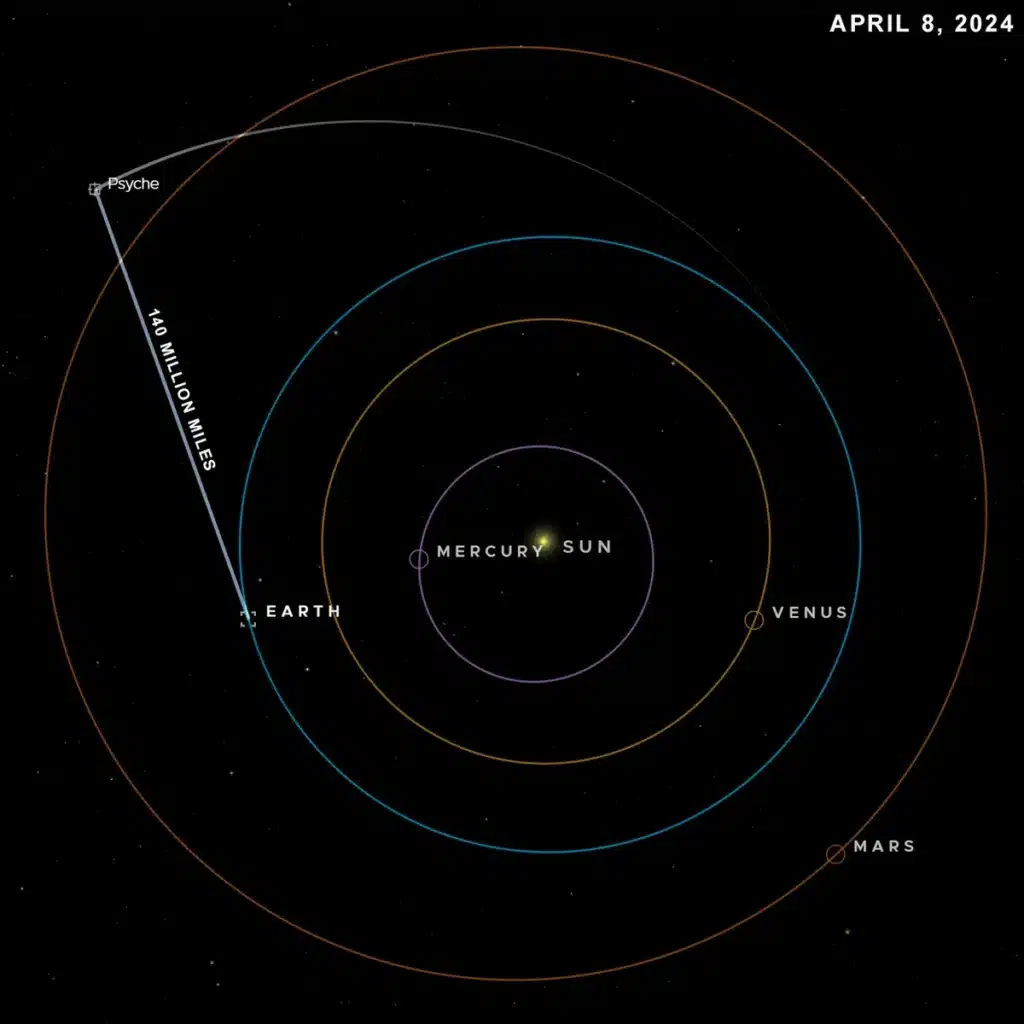
“We downlinked about 10 minutes of duplicated spacecraft data during a pass on April 8,” Meera Srinivasan, the project’s operations lead at NASA’s Jet Propulsion Laboratory (JPL), said in a statement.
“Until then, we’d been sending test and diagnostic data in our downlinks from Psyche.
“This represents a significant milestone for the project by showing how optical communications can interface with a spacecraft’s radio frequency comms system.”
The result was that images and a cat video (what else) were beamed back from deep space.
This far surpassed the reach of Earth’s culture past the lunar library.
While an overwhelming success, there are several kinks in the tech that need ironing out.
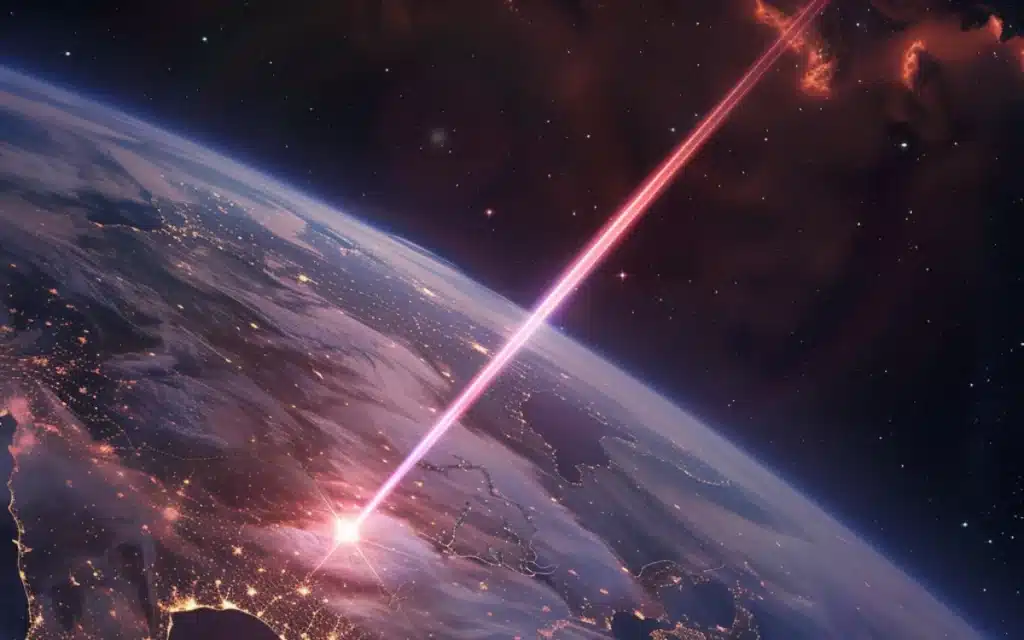
One is that optical observations are stopped by clouds – something that doesn’t affect radio comms.
“We’ve learned a great deal about how far we can push the system when we do have clear skies, although storms have interrupted operations at both Table Mountain and Palomar on occasion,” Ryan Rogalin, project receiver electronics lead at NASA JPL.
It’s hoped that these issues can be resolved in June when Psyche and its communications will be pushed even further.
It will be 2.5 times the distance Earth is from the Sun – which, by coincidence, is the furthest distance between Mars and Earth.
If successful, it could prove that a data-intensive network between Earth and Mars is possible.
Elon Musk will be happy as he plans a massive expansion of Starship to prepare for Mars missions.
Some of the images in this story were created using AI.
DISCOVER SBX CARS: The global premium car auction platform powered by Supercar Blondie

All Supercar Blondie contributors undergo editorial review and fact-checking to ensure accuracy and authority in automotive journalism. After gaining her BA Hons in French and English at the University of Nottingham, Amelia embarked on a vocational diploma from the National Council for the Training of Journalists (NCTJ). This led to numerous opportunities, from interning at Vogue to being on the small team that launched Women’s Health magazine in the UK, which was named the PPA Consumer magazine of the year for three years running. As Health, Beauty and Fitness editor, Amelia personally received a Johnson & Johnson Award and was shortlisted for both PPA and BSME titles. Since then, Amelia has created content for numerous titles and brands, including the Telegraph, 111 Skin, Waitrose, Red magazine, Stylist, and Elle, as well as being Head of Content at Vitality and Editor in Chief at INLondon magazine. “My superpower is translating technical jargon about the mechanical workings of a supercar into a relatable story you’ll want to share with your friends after you’ve read it.” After joining the SB Media family as a senior journalist in September of 2023, Amelia’s role has evolved to see her heading up the SEO output of the editorial team. From researching the most ‘Google-able’ key terms to producing evergreen content - it’s been a time of hard work, growth, and success for the editorial team and the Supercar Blondie website. “I like to think of myself as a ‘method journalist’. In other words: I live and breathe whatever I am writing about. When writing about fitness, I trained as a personal trainer, and as a beauty editor, I completed an ‘expert’ in scent diploma with the Fragrance Foundation. “During my tenure at Supercar Blondie, however, I did something I never thought possible: I passed my driving test at the age of 36. One day I’d love to train as a mechanic to better understand what happens under the hood, too. “My sweet spot is providing readers with a ‘takeaway’ (read: something new they didn’t know before) after reading every one of my stories. While I don’t claim to be an expert in the automotive world, I know the experts and bodies in the field to rely on to provide our readers with an informative and thought-provoking story every time they visit the site.”
